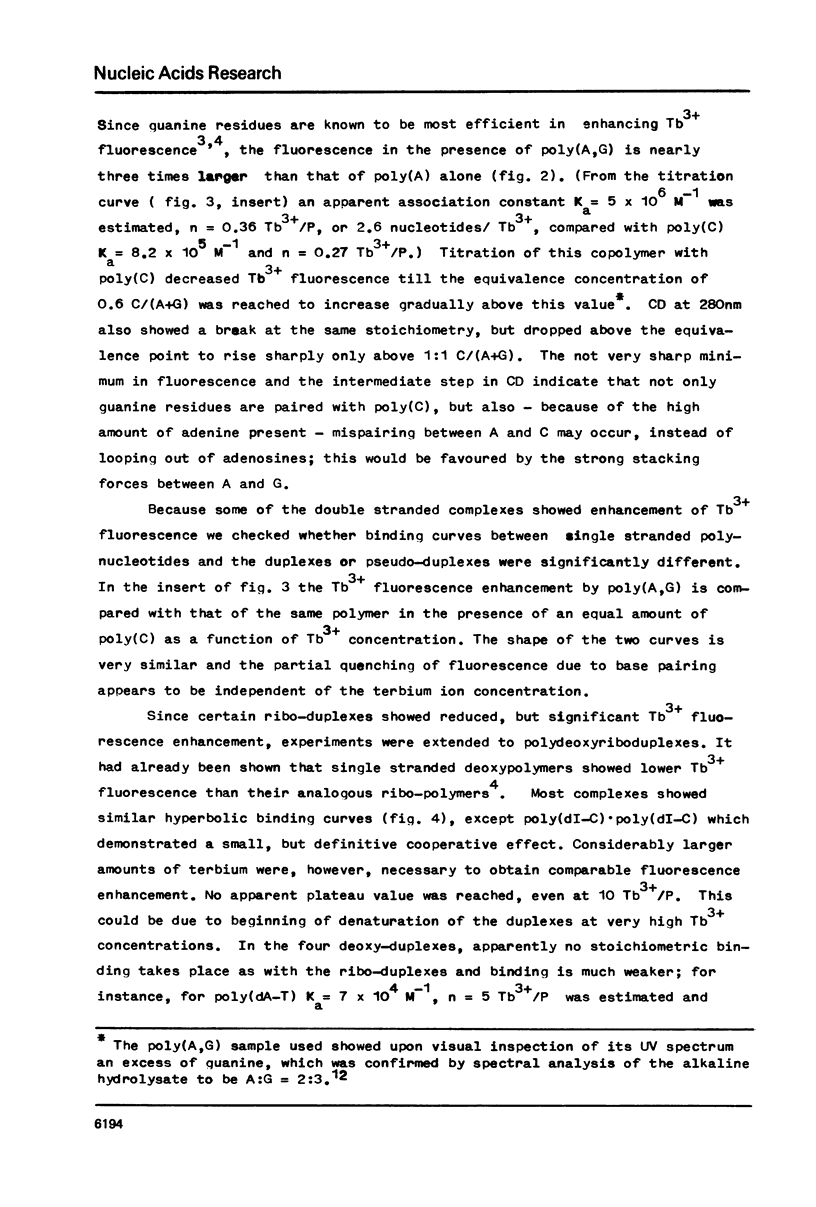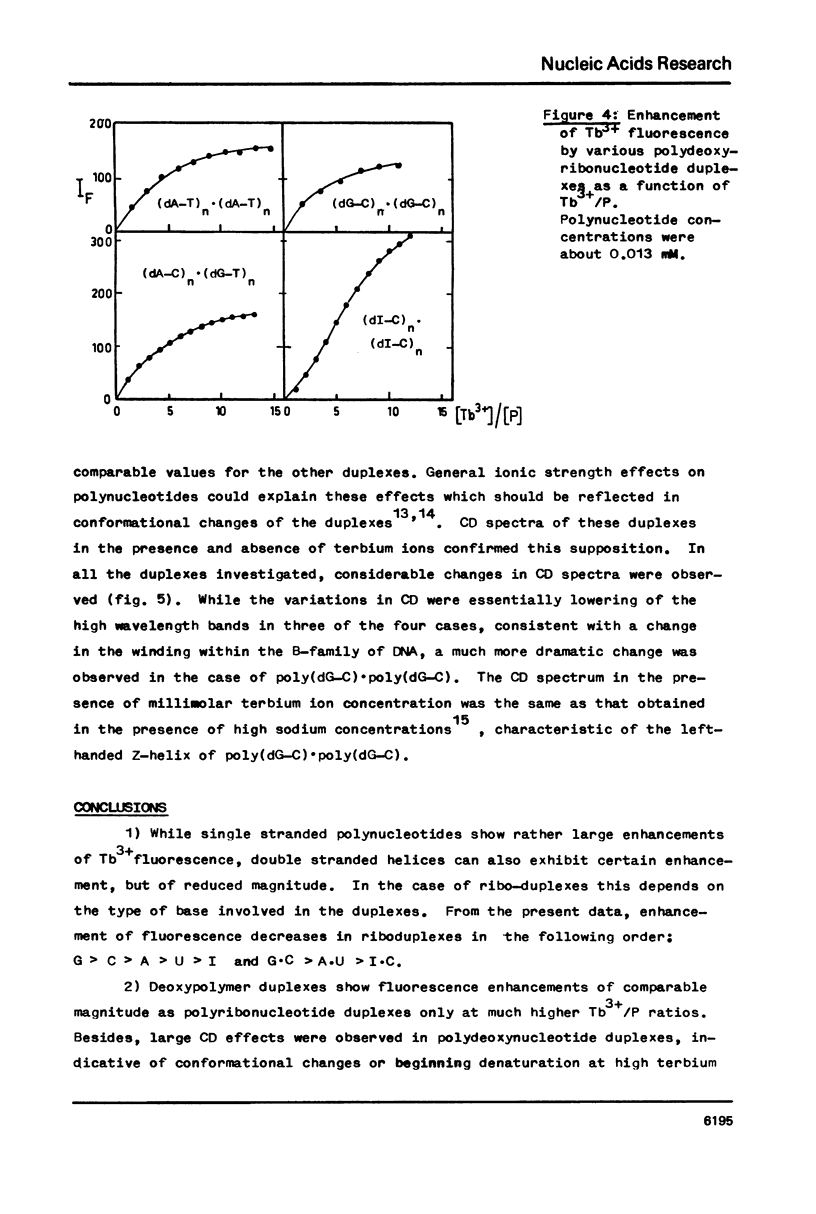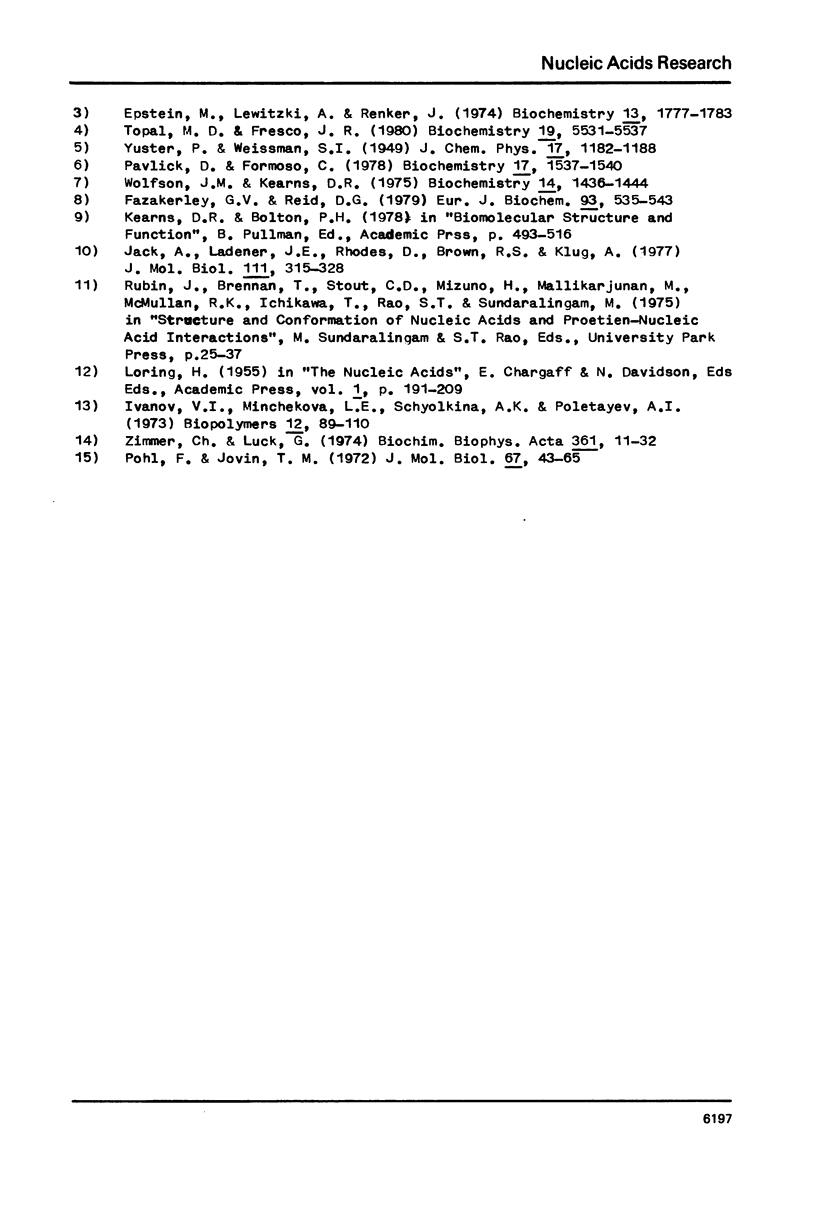Abstract
Enhancement of Tb3+ fluorescence upon binding to double-stranded ribo- and deoxyribo-duplexes was investigated. It was observed that certain double stranded ribopolynucleotides completely quenched the Tb3+ fluorescence and others did not. It is concluded that the nature of the base in the duplex is critical for this enhancement. - Polydeoxyduplexes also showed enhancement of Tb3+ fluorescence, but much higher terbium concentrations were necessary to obtain similar fluorescence signals, indicative of unspecific effects. CD spectra evidence considerable conformational changes of these duplexes, in particular poly(dG-C) . poly(dG-C( which assumes the Z-form in 0.1 nM Tb3+.
Full text
PDF






Selected References
These references are in PubMed. This may not be the complete list of references from this article.
- Epstein M., Levitzki A., Reuben J. Binding of lanthanides and of divalent metal ions to porcine trypsin. Biochemistry. 1974 Apr 9;13(8):1777–1782. doi: 10.1021/bi00705a034. [DOI] [PubMed] [Google Scholar]
- Fazakerley G. V., Reid D. G. Determination of the interaction of ADP and dADP with copper(II), manganese(II) and lanthanide(III) ions by nuclear-magnetic-resonance spectroscopy. Eur J Biochem. 1979 Feb 1;93(3):535–543. doi: 10.1111/j.1432-1033.1979.tb12852.x. [DOI] [PubMed] [Google Scholar]
- Formoso C. Fluorescence of nucleic acid-terbium (3) complexes. Biochem Biophys Res Commun. 1973 Aug 21;53(4):1084–1087. doi: 10.1016/0006-291x(73)90575-5. [DOI] [PubMed] [Google Scholar]
- Ivanov V. I., Minchenkova L. E., Schyolkina A. K., Poletayev A. I. Different conformations of double-stranded nucleic acid in solution as revealed by circular dichroism. Biopolymers. 1973;12(1):89–110. doi: 10.1002/bip.1973.360120109. [DOI] [PubMed] [Google Scholar]
- Jack A., Ladner J. E., Rhodes D., Brown R. S., Klug A. A crystallographic study of metal-binding to yeast phenylalanine transfer RNA. J Mol Biol. 1977 Apr 15;111(3):315–328. doi: 10.1016/s0022-2836(77)80054-5. [DOI] [PubMed] [Google Scholar]
- Pavlick D., Formoso C. Lanthanide fluorescence studies of transfer RNAf(met) conformation. Biochemistry. 1978 Apr 18;17(8):1537–1540. doi: 10.1021/bi00601a028. [DOI] [PubMed] [Google Scholar]
- Topal M. D., Fresco J. R. Fluorescence of terbium ion-nucleic acid complexes: a sensitive specific probe for unpaired residues in nucleic acids. Biochemistry. 1980 Nov 25;19(24):5531–5537. doi: 10.1021/bi00565a011. [DOI] [PubMed] [Google Scholar]
- Wolfson J. M., Kearns D. R. Europium as a fluorescent probe of transfer RNA structure. Biochemistry. 1975 Apr 8;14(7):1436–1444. doi: 10.1021/bi00678a014. [DOI] [PubMed] [Google Scholar]
- Zimmer C., Luck G. Conformation and reactivity of DNA. VI. Circular dichroism studies of salt-induced conformational changes of DNAs of different base composition. Biochim Biophys Acta. 1974 Aug 15;361(1):11–32. [PubMed] [Google Scholar]


